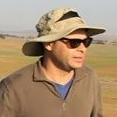Soil Degradation: Salinization, Compaction, and Erosion
A special issue of Geosciences (ISSN 2076-3263).
Deadline for manuscript submissions: closed (31 July 2020) | Viewed by 33881
Special Issue Editor
Interests: Soil; Soil degradation; Soil Salinization; Soil erosion; Soil quality; Sustainable agriculture
Special Issues, Collections and Topics in MDPI journals
Special Issue Information
Dear Colleagues,
Soil is one of the most important and essential resources on the globe; however its importance is somewhat underestimated, especially in political and decision-making circles. The lack of good quality soil risks the supply of food and fibre, of clean fresh water, biodiversity and the overall protection of the ecosystem. It also reduces the potential of soil to act as a sink in the carbon cycle and may remove a central platform for the production of renewable energy sources. Despite its economic and environmental importance, soil is continuously being lost globally due to various degradation processes, with modern agriculture being a main cause of these. This is demonstrated by the fact that more than 50% of agricultural soils are moderately or highly degraded, while less than one third of natural soils are exposed to degradation processes. Soil degradation and loss of soil fertility are mainly a result of loss of soil organic carbon, compaction, salinization and erosion, where the four processes are affecting each other and tightly related to hydrological processes at the unsaturated zone.
Given these considerations, the objective of this Special Issue is to encourage the submission of manuscripts about soil degradation processes, mainly with respect to soil salinization, compaction, and erosion and the interactions between these processes. Special attention will be given to relevant studies in agricultural environments and the examination of methods to reduce soil degradation of cultivated croplands.
The Special Issue will deal with the following major topics, at any scale and including experimental, modeling and field studies:
- Soil salinization: Solute transport processes; salt precipitation; saline water irrigation; cropland soil salinization.
- Soil compaction: Measuring methods; physical and hydraulic changes to soil properties following compaction; the impact of soil compaction on the spatial distribution of soil physical and hydraulic properties.
- Soil erosion: Measuring methods; soil cultivation and soil erosion; natural processes of soil erosion.
- Interactions between soil salinization, compaction, and erosion.
- Practical methods for minimizing the risks of soil salinization, compaction and erosion.
- Impact of soil salinization, compaction, and erosion on plant water and nutrient uptake.
Dr. Uri Nachshon
Guest Editor
Manuscript Submission Information
Manuscripts should be submitted online at www.mdpi.com by registering and logging in to this website. Once you are registered, click here to go to the submission form. Manuscripts can be submitted until the deadline. All submissions that pass pre-check are peer-reviewed. Accepted papers will be published continuously in the journal (as soon as accepted) and will be listed together on the special issue website. Research articles, review articles as well as short communications are invited. For planned papers, a title and short abstract (about 250 words) can be sent to the Editorial Office for assessment.
Submitted manuscripts should not have been published previously, nor be under consideration for publication elsewhere (except conference proceedings papers). All manuscripts are thoroughly refereed through a single-blind peer-review process. A guide for authors and other relevant information for submission of manuscripts is available on the Instructions for Authors page. Geosciences is an international peer-reviewed open access monthly journal published by MDPI.
Please visit the Instructions for Authors page before submitting a manuscript. The Article Processing Charge (APC) for publication in this open access journal is 1800 CHF (Swiss Francs). Submitted papers should be well formatted and use good English. Authors may use MDPI's English editing service prior to publication or during author revisions.
Keywords
- Soil Salinization
- Soil Erosion
- Soil Compaction
- Soil Degradation
- Weathering
- Solute Transport
- Soil Fertility
- Soil Management
- Croplands
Benefits of Publishing in a Special Issue
- Ease of navigation: Grouping papers by topic helps scholars navigate broad scope journals more efficiently.
- Greater discoverability: Special Issues support the reach and impact of scientific research. Articles in Special Issues are more discoverable and cited more frequently.
- Expansion of research network: Special Issues facilitate connections among authors, fostering scientific collaborations.
- External promotion: Articles in Special Issues are often promoted through the journal's social media, increasing their visibility.
- Reprint: MDPI Books provides the opportunity to republish successful Special Issues in book format, both online and in print.
Further information on MDPI's Special Issue policies can be found here.





